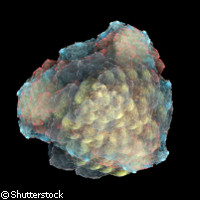Scientists track source of unusual meteorite
When meteorites land on Earth, it is often impossible to say where exactly in our Solar System they originated. Out of nearly 1,100 documented meteorite falls over the past 200 years, researchers have only been able to pinpoint the origin of a dozen. A new camera network in the Australian desert, however, has now helped achieve exactly that feat for a new meteorite. After analysing the meteorite's trajectory across the sky as documented by the camera network, the international team of researchers from Australia, the Czech Republic, the UK and the US concludes in a paper published in the journal Science that the meteorite comes from the innermost asteroid belt between Mars and Jupiter. Part of the funding for the study came from the Marie Curie research network ORIGINS ('Elucidating the origins of solar system(s): anatomy of primitive meteorites'). The ORIGINS network receives EU-funding to the tune of EUR 2.6 million. Using the time-lapse photography technique, the network takes a single picture of the skies every night. On the basis of this picture that records any meteorite fireball, experts can trace the object's orbit and predict the likely landing site. 'We're incredibly excited about our new finding,' says Dr Phil Bland of Imperial College London, lead author of the study. 'Meteorites are the most analysed rocks on Earth but it's really rare for us to be able to tell where they came from. Trying to interpret what happened in the early Solar System without knowing where the meteorites are from is like trying to interpret the geology of Britain from random rocks dumped in your back yard.' The cricket-ball-sized object was retrieved from the Nullarbor Plain in Western Australia, where it had fallen to Earth in July 2007. In addition, the composition of the meteorite turned out to be uncommon, too: it is made up of a rare type of basaltic igneous rock. A recent theory suggests that asteroids composed of the same igneous rock might be the building blocks for planets like Earth. The origin of the meteorite as well as its composition corroborates that theory and thus gives insights into the formation of our Solar System. The great success raises the researchers' hopes that the camera network in western Australia will provide more such insights. 'We're not the first team to set up a network of cameras to track fireballs,' concedes Dr Bland. 'But other teams have encountered problems because meteorites are small rocks and they're hard to find in vegetated areas. Our solution was quite simple - build a fireball network in a place where it's easy to find them. The Nullarbor Desert is ideal because there's very little vegetation and dark rocks show up really easily on the light desert plain. 'It was amazing to a find a meteorite that we could track back to its origin in the asteroid belt on our first expedition using our small trial network,' Dr Bland emphasises. 'We're cautiously optimistic that this find could be the first of many and if that happens, each find may give us more clues about how the Solar System began.'
Countries
Australia



